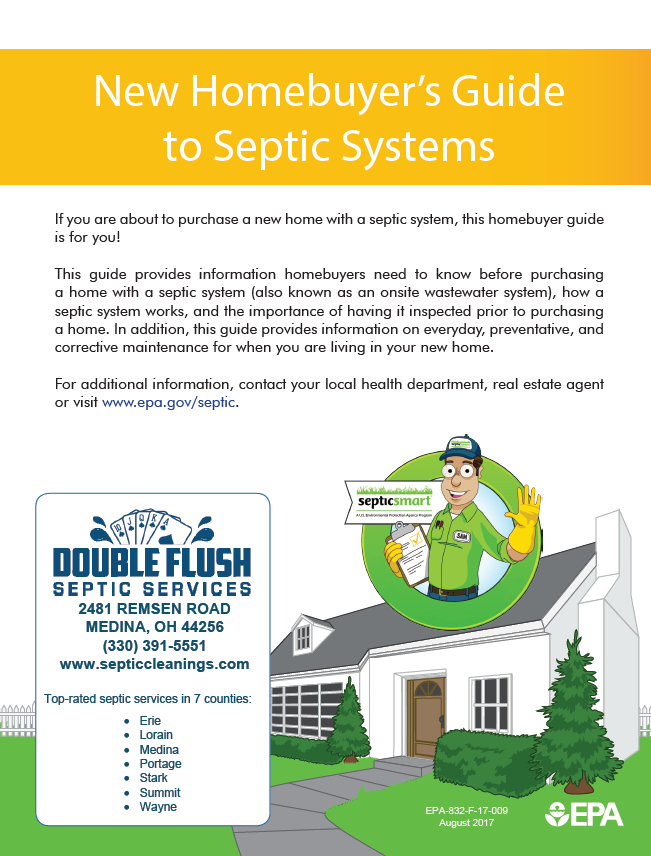WHAT’S INVOLVED IN A SEPTIC INSPECTION?
Septic tank inspections, septic system inspections and septic inspections all mean the same. A septic inspection looks at more than just the septic tank so the phrases septic inspection or septic system inspection is more accurate. Although the septic “tank” is only one part of the whole septic system, it is common for us to associate our systems with their largest component, the tank.
We’ll use this post to explain what is involved in a septic inspection and when to get an inspection, regular maintenance or a septic cleaning.
WHAT’S INVOVLVED IN MY SEPTIC INSPECTION?
Septic inspections are defined differently by each governing body. Then there’s the common sense definition.
In the EPA’s Homeowners Septic Guide a Septic Inspection Should Include:
The inspector will check for the following:
• Pumping and maintenance records;
• The age of the septic system;
• Sludge levels and scum thickness in the tank;
• Signs of leakage, such as low water levels in the tank;
• Signs of backup, such as staining in the tank above the outlet pipe;
• Integrity of the tank, inlet, and outlet pipes;
• The drainfield, for signs of system failure like standing water;
• The distribution box, to make sure drain lines are receiving equal flow; and
• Available records, to ensure the system complies with local regulations regarding function and location.
According to the EPA’s definition, each time we clean your septic tank, pump your septic tank or perform our annual or semi-annual service plan, we are including a septic inspection. At Double Flush Septic Services, every time you choose us for your septic service provider we check the functionality and health of your system. If we have serviced your septic system from the septic installation, we have access to your pumping and maintenance records already, know the age of your system and are familiar with compliance to local regulations.
Each Ohio County Defines Septic Inspection Requirements
If you need a septic inspection for the county’s requirement, whether or not we can perform the inspection depends on the county. For example, Summit County has additional requirements that involve the homeowner (from their website below) We currently do not provide septic inspections in Summit County for transfer of real estate. We service Summit County with all other septic services. So call us to discuss your county’s regulations if you are getting a septic inspection for a real estate transaction.
What to expect during inspection (Specific to Summit County)
Make sure that there is access to the septic tank lids. If buried, lids will need to be uncovered prior to the inspection. The inspection will take approximately 1-2 hours and the inspector will need access inside the home. The inspector will run water to test the flow rate of the PWS, as well as the functionality of the STS. The inspector will need to have a lockbox code for the property or someone available to let them inside. DO NOT PUMP TANKS PRIOR TO INSPECTION.
***Inspections must still be conducted if the property is vacant and/or does not have running water***
REDUCE EMERGENCY SEPTIC SERVICES WITH SEPTIC SERVICE PLANS
24/7 EMERGENCY SEPTIC SERVICES NEAR YOU
We service the Northern Ohio area; are service area includes Erie, Lorain, Wayne, Portage, Summit, Stark and Medina Counties. Our family-owned septic company is the one to call for all of your emergency septic tank services, including septic tank pumping. We can work around your schedule when it’s convenient for you, including working on weekends and evenings. Our team offers efficient septic tank pumping, septic cleaning, septic installations and septic repairs so we take up as little of your time as possible. We take our time to ensure your septic system looks healthy and is in good shape for the future. Rest assured, when you partner with our local, family-owned septic company for your septic services, your home or business will be well served. Call to get started today!

